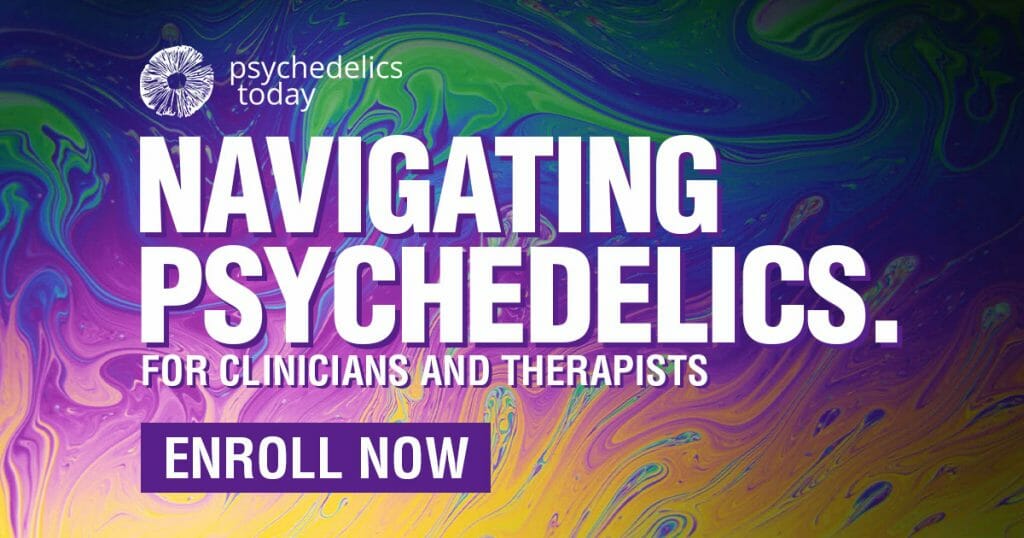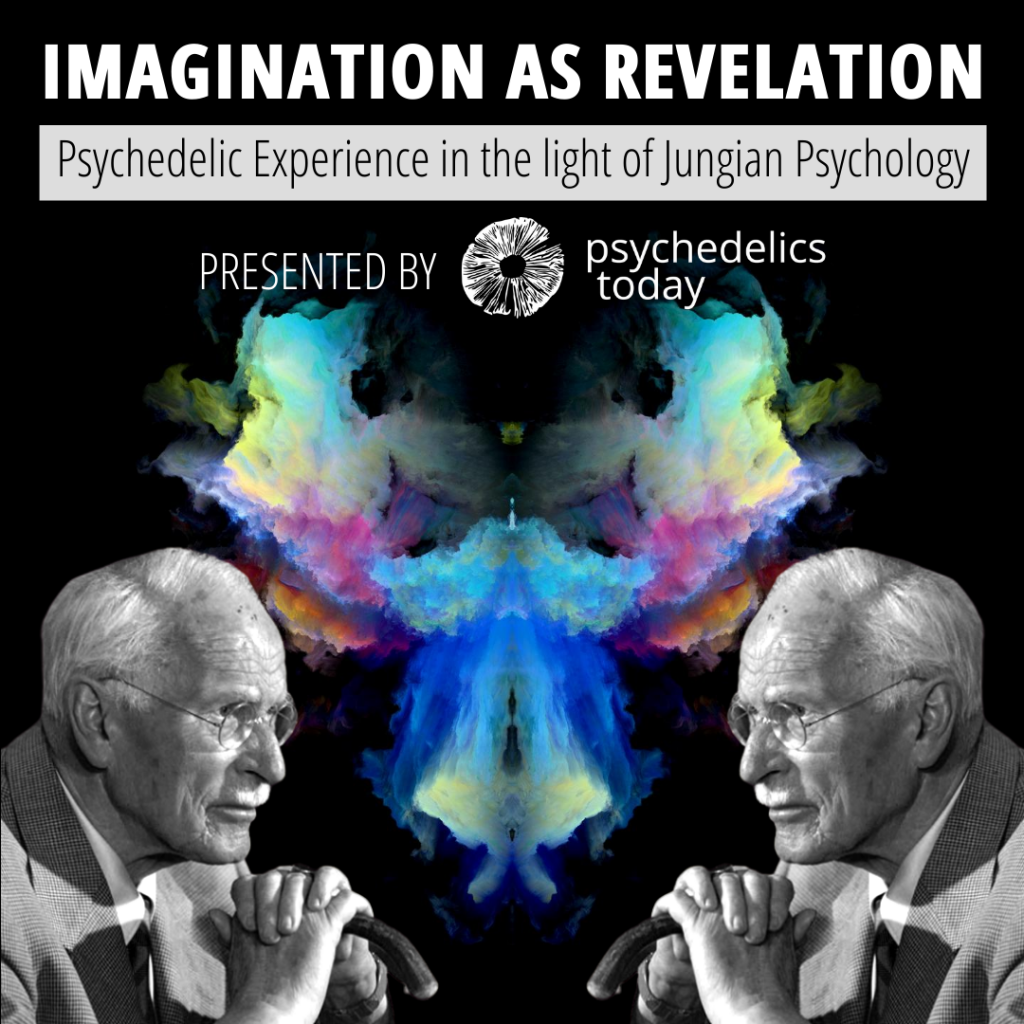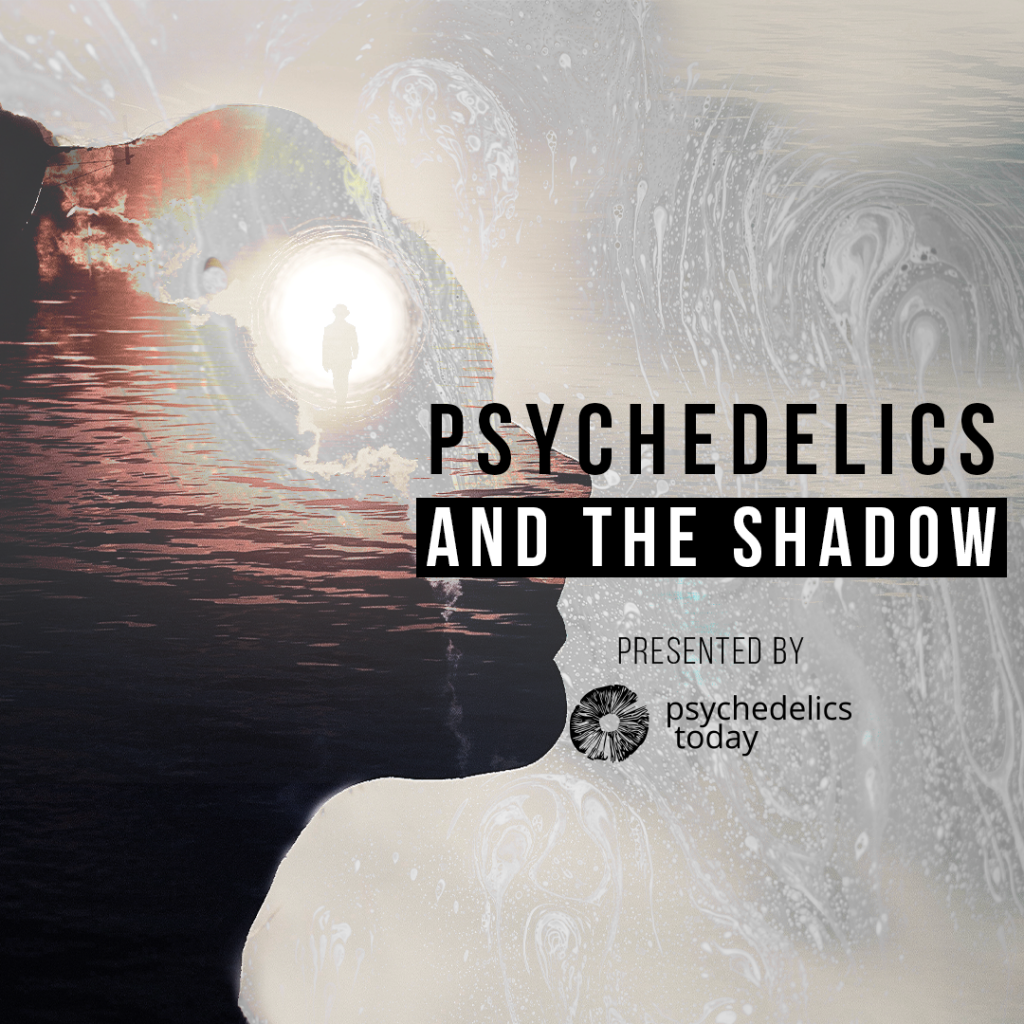By Rebecca Martinez
How do you draw the line between a healthy escape and a dissociative disorder? And could dissociative psychedelics like ketamine play a part?
We live in a deeply interconnected world. From our ecosystems to our societies, the Earth is made up of living things held in dynamic relationships. We as humans are deeply woven into this fabric. But sometimes, all this connection can be too much to hold. Whether from acute trauma, overstimulation, or constant societal stress, our bodies have built-in intelligence that allows us to dissociate or disconnect from our current experience when we’ve reached our saturation point.
On the heels of the COVID-19 pandemic, the question of how we cope with and heal from traumatic experiences has been front of mind. I spoke with somatic practitioner, Claudia Cuentas, MA, MFT, and Psy.D., psychologist, ketamine specialist and founder of KRIYA (Ketamine Research Institute), Raquel Bennett, to discuss the psychology of dissociation, what happens when it becomes a disorder, the healing power of escapism, and where psychedelics like ketamine fit into the conversation.
It turns out, dissociation isn’t all bad.
A Term With Many Meanings: What Is Dissociation?
So, what exactly is dissociation?
Raquel Bennett, who has been studying therapeutic ketamine since 2002 and who teaches the Masterclass on Ketamine in our Navigating Psychedelics for Clinicians and Therapists course, put it this way: “There are different kinds of dissociation or disconnection, including dissociation from your body or bodily sensations; dissociation from your thoughts or awareness; and dissociation from your biographical history, identity, or sense of self.”
Claudia Cuentas explained it another way. “Dissociation is a physiological self protective response, and it is activated when the body feels saturated or overwhelmed by an input or by too much information at once. That information can come from an internal or external stimulus. Dissociation is our bodies’ ability to remove its attention from the present and take a break, pause and/or, hopefully, recalibrate back into presence. Children do it all the time. That gazing and daydreaming is self-regulating. It is an amazing regulatory system we have.”
While they may look the same from the outside, many experts say that dissociation is different from absent mindedness. Many of us can relate to driving home and not remembering the drive, or checking out during a meeting because we are distracted by something going on in our personal lives. Dissociation is a common experience, and not necessarily a cause for concern. The question is: Is dissociation or the dissociation patterns you have developed to cope with internal/external stressors interrupting your ability to enjoy life?
On top of this, the pressures of modern life can almost be too much to bear at times. We are inundated with unlimited newsfeeds and chaotic information overload in a way that no generation has ever been. What are embodied creatures like us meant to do with the realities of systemic injustice, climate catastrophe, and economic collapse, on top of personal concerns like relationships, mortgages, and health issues?
In response to these pressures, we’ve normalized a culture of disconnection. Checking out of life may become a habitual way of coping with the strain of daily life: binge watching TV or scrolling on social media. Gaming out. Numbing with drugs or alcohol. Swiping on Tinder. These are activities that put us in passive roles and don’t require our engaged presence or participation.

Dissociative Disorders
Tuning out itself isn’t necessarily problematic. When it comes as a response to overstimulation, it serves a purpose and then the person can return to present awareness naturally when they feel ready. However, this disconnection can sometimes happen involuntarily or becomes a default way of moving through life. Often, chronic dissociation comes as a result of acute or ongoing trauma.
For people living with dissociative states, this disconnection from one’s body, mind, emotions or identity can be distressing and have a major impact on relationships and quality of life. They may experience depersonalization (feeling as though they don’t control their body, thoughts or emotions) or derealization (a disruption in one’s perception of reality, as though the world is unreal, hazy or flat).
Dissociation can show up in a lot of ways: tuning out during a difficult conversation, personality changes, forgetting major memories or stretches of time, difficulty staying present during sex, or feeling unaware of one’s own body. Sometimes these episodes begin in response to overstimulation or an event that triggers traumatic memory or association.
I asked Cuentas how these disorders happen, and how they might be addressed.
“At times, we may feel that life is not that safe or that the present is not that safe. This is especially true when there has not been an ability to heal, digest and process past trauma and understand why an experience was so frightening or difficult. People don’t want to feel present because if they do, they will be overwhelmed by sensations associated with pain, sadness, overwhelm. The body sends a signal to the brain through the nervous system, and the brain and/orr the body disconnect from the present reality. So the mind says, I am going to release attention from the whole system so that you are here… but not here. I am going to keep you safe.. This way, you don’t have to feel the pain you have gone through.”
“Dissociative diagnoses arise when we are using this way of coping as an unconscious default,” she adds. “Sometimes people struggle because they aren’t feeling like themselves. Maybe everything is numb. Or they feel like they are witnessing a facade of somebody else. Most of the time, dissociative diagnoses are connected to intense, deep, unaddressed trauma from very early on stages of life.”
This questionnaire is a useful tool for distinguishing between normal and problematic dissociative experiences.

Could Somatic Practices & Dissociative Drugs Like Ketamine Be The Path Back?
According to Cuentas, the way to alleviate dissociative disorders is to increase one’s tolerance over time for sensations that may be uncomfortable or overwhelming, essentially moving through the trauma at a pace that’s comfortable and tolerable to the individual.
“We have to get beyond this self-protection mechanism that kicks in automatically. So how do we decode the experience to relieve the body from the automatic response in order to enjoy the present? If you keep unconsciously self protecting to not feel the pain, then you’re missing everything– joy, love, intimacy, all your senses. You turn off your ability to sense comfortable or uncomfortable experiences, like enjoying a sky full of colors, feeling the softness of your skin, hearing a song and go, ‘wow, I like that’. It’s numbing, and the person may not, at times, even realize.”
Finding pleasurable ways to exist in one’s body is an essential part of processing, healing, and moving through trauma. Many trauma therapists work with a particular focus on the body, known as “somatic” practices. This is essential because, although the mind can check in and out through dissociation, the body carries the load of a lifetime of experiences. Cuentas’ work focuses on the use of embodied approaches, like art, dance, music, drama and storytelling as healing modalities for families and communities.
Psychedelic substances may offer another path to doing this work. Part of the theory around why psychedelics help with trauma is related to capacity building. By promoting states of openness, they create opportunities for people to re-engage with painful or traumatic experiences and form new relationships to these memories.
Psilocybin and MDMA have received the most press in recent years, but ketamine has held a steady role as one of the only legal psychedelics clinicians can currently offer. It’s common to hear people speak about ketamine as a dissociative. I asked Bennett her thoughts on this classification.
“When you take ketamine, you may be dissociated from your body; in other words, the signals from your sensory input organs may be temporarily muted,” she says. “However, when ketamine is utilized in a physically and psychologically safe setting, people tend to be keenly aware of or connected with their own thoughts and internal images.”
The dissociation felt with ketamine is more physiological than psychological. I asked Cuentas to expand upon this. She explained that, based on a somatic perspective, it seems like ketamine temporarily disconnects the body and the mind, whereas the coping mechanism of dissociation can often disconnect people from their own consciousness as well.
“Seems like Ketamine can turn the body off so the mind doesn’t have to negotiate how to to keep the body safe or what to do with the body’s intense signals of stress, which are common during or after traumatic experiences,” says Cuentas. “So for a period of time, it may not have to navigate the usual intensity and discomfort. If this happens, the mind is released from its usual concerns/stressors, and its attention can possibly concentrate on other sensations or realms of awareness.”
“As the body experiences numbness or dissociation, it is still tracking the experience, but not reacting. When a body is affected by an anesthetic like Ketamine for therapeutic uses, it will put the body in a highly suggestible state,” Cuentas adds. “From a somatic perspective, there is a window of time as a person is coming back to feeling their body again— that is the moment of doing a lot of processing. I believe this is possibly the most effective way to work with ketamine. Whatever happens in this window of reconnection between unconsciousness and consciousness or body awareness, will be recorded in the body. You would have to be intentional because whatever you introduce in that state can have a great impact on your psyche.”
Feeling good is an essential part of our healing.
Returning To Safety From Dissociative Disorders
Dissociation is the human body’s way of trying to achieve safety. As we are unlearning automatic responses that don’t serve us, the need for a sense of safety is still present. How do we develop a sense of safety within ourselves when we can’t guarantee it in our external environment? Therapists refer to resourcing—tools that help people develop a higher tolerance for discomfort. In this way, we can stay in the present moment longer without needing to dissociate.
Especially for people from marginalized communities, creating microcosms of safety, even temporary ones, can be essential practice for dealing with life. These pods of comfort can come from affinity spaces, keeping a close inner circle, getting immersed in something you love, and for some people, exploring altered states.
In pursuit of safety, a natural response to triggering scenarios is to remove oneself from further harm. However, safety can’t necessarily be achieved in a societal context which is inherently unsafe for many people in our communities. Some people may feel they always have to be shut down or running to escape harm. For these folks, there is an even greater need for networks of support and practical tools that grow the ability to stay present. It can be empowering and freeing to stay present through a practice of pleasure, feeling the body’s sensations, and finding what feels positive and safe in the here and now.
When Dissociation Can Be a Positive
For those of us not dealing with chronic dissociation, the question to ask is whether we are habitually checking out from the present moment and if so, what shifts in these habits might help us have a more fulfilling quality of life. Perhaps instead of relying on screens or substances to wind down, we could incorporate activities that invite pleasurable presence: music, dance, breath work, meditation, meals, or the company of a loved one. It helps to view this as something to practice, rather than something to be good or bad at.
On the other hand, escapism isn’t always a bad thing. There is agency in choosing when and how to turn off the outside world for a while. In order to absorb the benefits of this freedom, dissociating needs to be something that is consciously chosen, rather than an automatic stress based response.
In some ways, escapism is a combination of dissociation and resourcing. Tuning out on purpose, or even altering one’s perception, can offer a healthy way to find rest and recovery from the concerns of daily life. It can also help us to remember what it is like to feel good and build capacity for pleasure. Feeling good is an essential part of our healing.

Grammy nominated singer Jhené Aiko often writes songs about the use of cannabis and psychedelics as medicine. As a mixed race woman of color, she poetically contrasts the peaceful haze of altered states and the harsh realities of the world outside.
She says it well in her hit, “Tryna Smoke”:
Life’s no fairytale, I know all too well/ Gotta plant the seed sometimes /Then you let it grow
Inhale, exhale some more/ Heaven in Hell/ If you know, you know/ That sh*t is beautiful
You gotta just let it go/ Spark up a blunt and smoke
Similarly, in her song “Bed Peace”, featuring Childish Gambino, she sings:
Yeah, what I am trying to say is/ That love is ours to make so we should make it
Everything else can wait/ The time is ours to take so we should take it
We should stay right here/ We should lay right here’Cause everything is okay right here
Conclusion: Dissociation Is Complex
Dissociation is multifaceted. It can signal trauma, offer temporary respite from trauma, and potentially even a path to healing trauma.
Altered states of consciousness, whether from known dissociatives like ketamine, or other substances, give us an opportunity to choose when and how to leave our physical realms and return. They shift our awareness of our spirits, minds and bodies, and often create pleasurable sensations and new insights along the way.
Cuentas closes our conversation by reminding me that the intentions we bring to these experiences are important. “You are recording information in your subconscious/psyche. So what do you want to put there?” she asks.
We can’t necessarily make the world safer today. So there is power in creating microcosms of the world we are dreaming forward. In creating a practice of pleasure and joy, we’re able to fill our spirits like a well to draw upon during difficult experiences. Perhaps eventually, as these micro-moments of safety and resourcing find their way into our embodied realities, they will spread like mycelium and we will create a world that is less traumatizing to begin with.
RESOURCES
Ketamine risk reduction information from Dance Safe
Firsthand accounts of dissociation
This article was updated on July 19, 2021 to reflect changes by one of the sources.
Rebecca Martinez is a Xicana writer, parent and community organizer born and raised in Portland, Oregon. She is a co-founder of the Fruiting Bodies Collective, an advocacy group, podcast and multimedia platform addressing the intersections between healing justice and the psychedelics movement. Rebecca served as the Event & Volunteer Coordinator for the successful Measure 109 campaign, an unprecedented state initiative which creates a legal framework for psilocybin therapy in Oregon. She is also the author of Edge Play: Tales From a Quarter Life Crisis, a memoir about psychedelic healing after family trauma, spiritual abuse, and police violence. She serves on the Health Equity Subcommittee for Oregon’s Psilocybin Advisory Board as well as the Board of Advisors for the Plant Medicine Healing Alliance.

